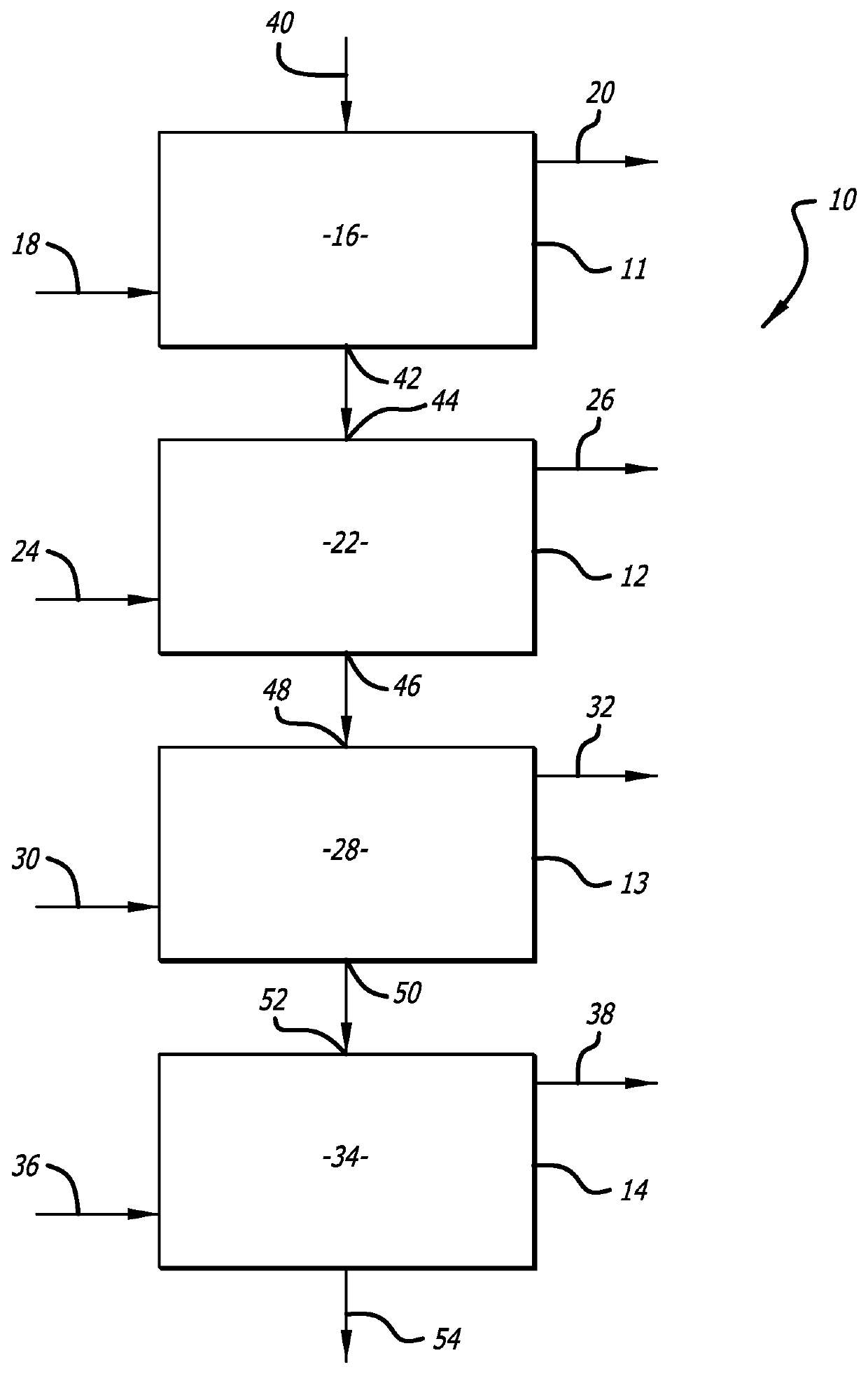Selective control of oxidation atmospheres in carbon fiber production
a carbon fiber and oxidation atmosphere technology, applied in the field of carbon fiber making methods, can solve the problems of achieve the effects of improving tensile strength of carbon fiber, positive tensile strength, and little improvement in tensile strength
- Summary
- Abstract
- Description
- Claims
- Application Information
AI Technical Summary
Benefits of technology
Problems solved by technology
Method used
Image
Examples
Embodiment Construction
[0018]The present invention is applicable to any of the processes or methods for making carbon fiber from a precursor fiber, such as polyacrylonitrile fiber. In general, such methods may include a variety of pre-treatments which may include stretching of the precursor fiber and / or the application of a finish oil. The treated precursor fiber is then fed through a plurality of oxidation ovens where it is oxidized in an oxygen-containing atmosphere to form oxidized precursor fiber. The oxidation step is also referred to as the stabilization step in which a stabilized precursor fiber is formed. The stabilized precursor fiber is then fed to one or more carbonization furnaces where it is carbonized in a high temperature inert atmosphere to form carbon fiber. Carbon fiber is typically composed of at least 90 weight percent carbon and preferably at least 92 weight percent carbon.
[0019]The present invention is directed to controlling the humidity in the oxidation atmospheres in a carbon fibe...
PUM
| Property | Measurement | Unit |
|---|---|---|
| temperatures | aaaaa | aaaaa |
| temperature | aaaaa | aaaaa |
| temperatures | aaaaa | aaaaa |
Abstract
Description
Claims
Application Information
 Login to View More
Login to View More - R&D
- Intellectual Property
- Life Sciences
- Materials
- Tech Scout
- Unparalleled Data Quality
- Higher Quality Content
- 60% Fewer Hallucinations
Browse by: Latest US Patents, China's latest patents, Technical Efficacy Thesaurus, Application Domain, Technology Topic, Popular Technical Reports.
© 2025 PatSnap. All rights reserved.Legal|Privacy policy|Modern Slavery Act Transparency Statement|Sitemap|About US| Contact US: help@patsnap.com

